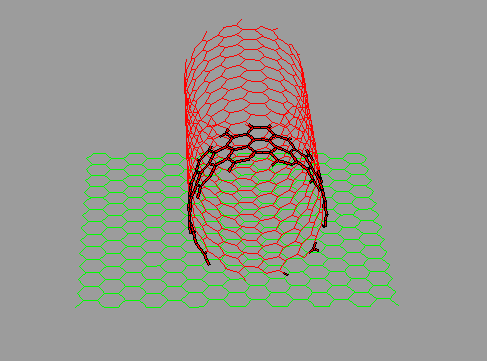High temperature in the process (discharge) for the synthesis of nanotubes ( carbon in the negative electrode is sublimated) PhD in Nano-Microelectronics
Researcher and author: Dr. ( Afshin Rashid)
Note: In this process (CVD), the carbon in the negative electrode is sublimated due to the high temperature in the discharge process. Since this method was first used to synthesize nanotubes , it is known as the most common method of producing carbon nanotubes. In this method, which has both types of nanotubes, single-walled and multi-walled, with lengths of up to 50 microns containing structural defects.
In the laser irradiation process, the laser is used to evaporate the graphite and an inert gas is used to conduct these vapors into the tank. Carbon nanotubes grow on the cold surface of the reactor . It is suitable for the production of multi-walled carbon nanotubes. And the use of composite graphite and metal catalyst particles combination of cobalt and nickel (for the synthesis of carbon nanotubes) CNT and the CNTs can be used. The efficiency of this process is 70 % and its main product is single-walled and multi-walled carbon nanotubes. The diameter of these nanotubes is completely controllable and the diameter of the nanotubes can be controlled as desired by changing the temperature .
Carbon nanotubes are produced and propagated using a variety of methods , such as CVD, laser irradiation, and deburring . The CVD method is the best option for the industrial production of carbon nanotubes. The reason for this is the low cost-to-income ratio as well as the possibility of vertical growth of nanotubes on the desired substrate . Catalyst- assisted CVD method was used to produce carbon nanotubes . During the CVD process, a layer of nickel, cobalt, and metal catalyst particles, iron is commonly used to make carbon nanotubes . CVD is a common method for the commercial production of carbon nanotubes. In this method, the diameter of the nanotubes is related to the dimensions of the metal particles. With Substrate patterning, heat treatment and pulsed catalysis of the catalyst can control the diameter of the nanotubes.
Conclusion :
In this process (CVD), the carbon in the negative electrode is sublimated due to the high temperature in the discharge process. Since this method was first used to synthesize nanotubes , it is known as the most common method of producing carbon nanotubes. In this method, which has both types of nanotubes, single-walled and multi-walled, with lengths of up to 50 microns containing structural defects.
Researcher and author: Dr. ( Afshin Rashid)
PhD in Nano-Microelectronics




